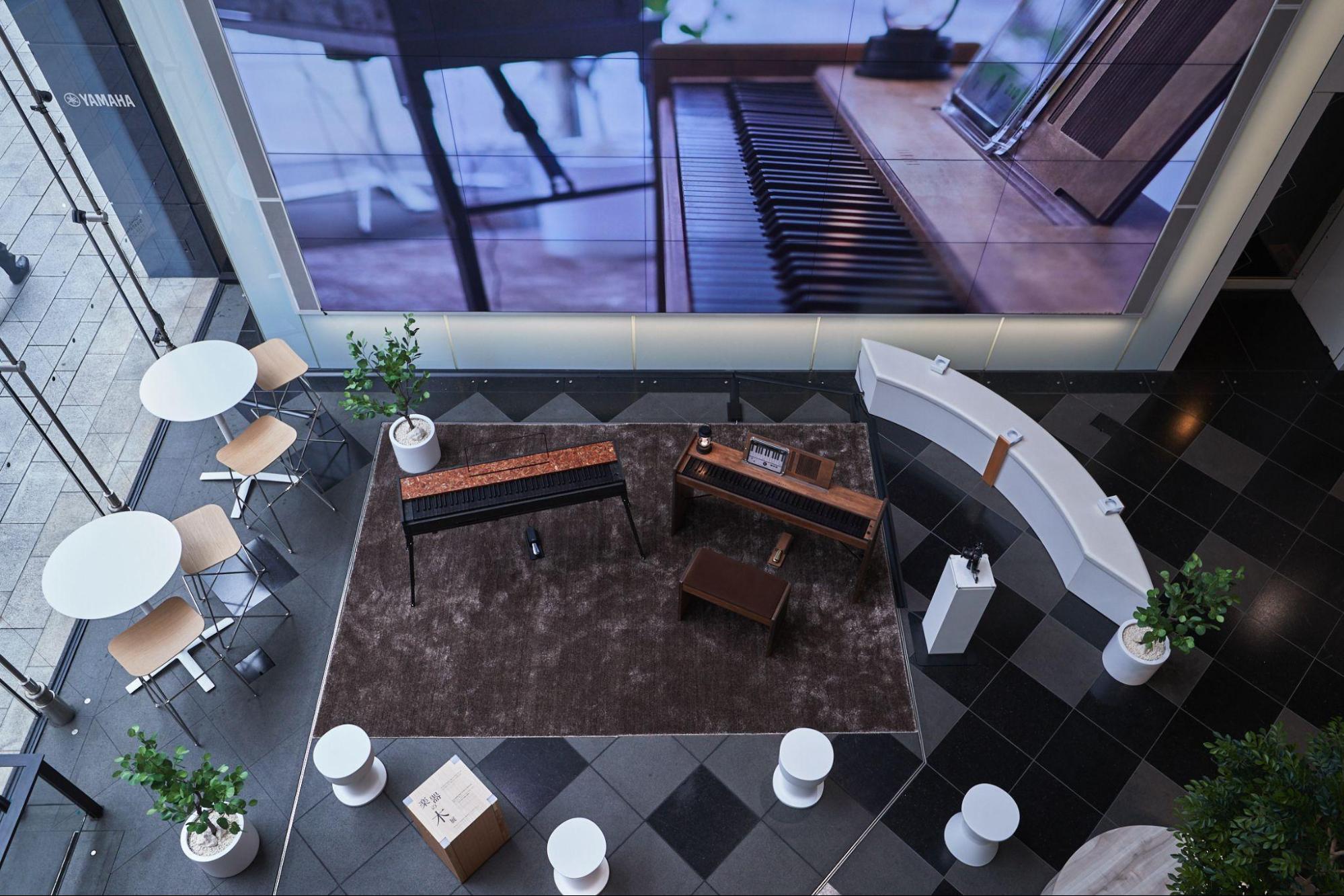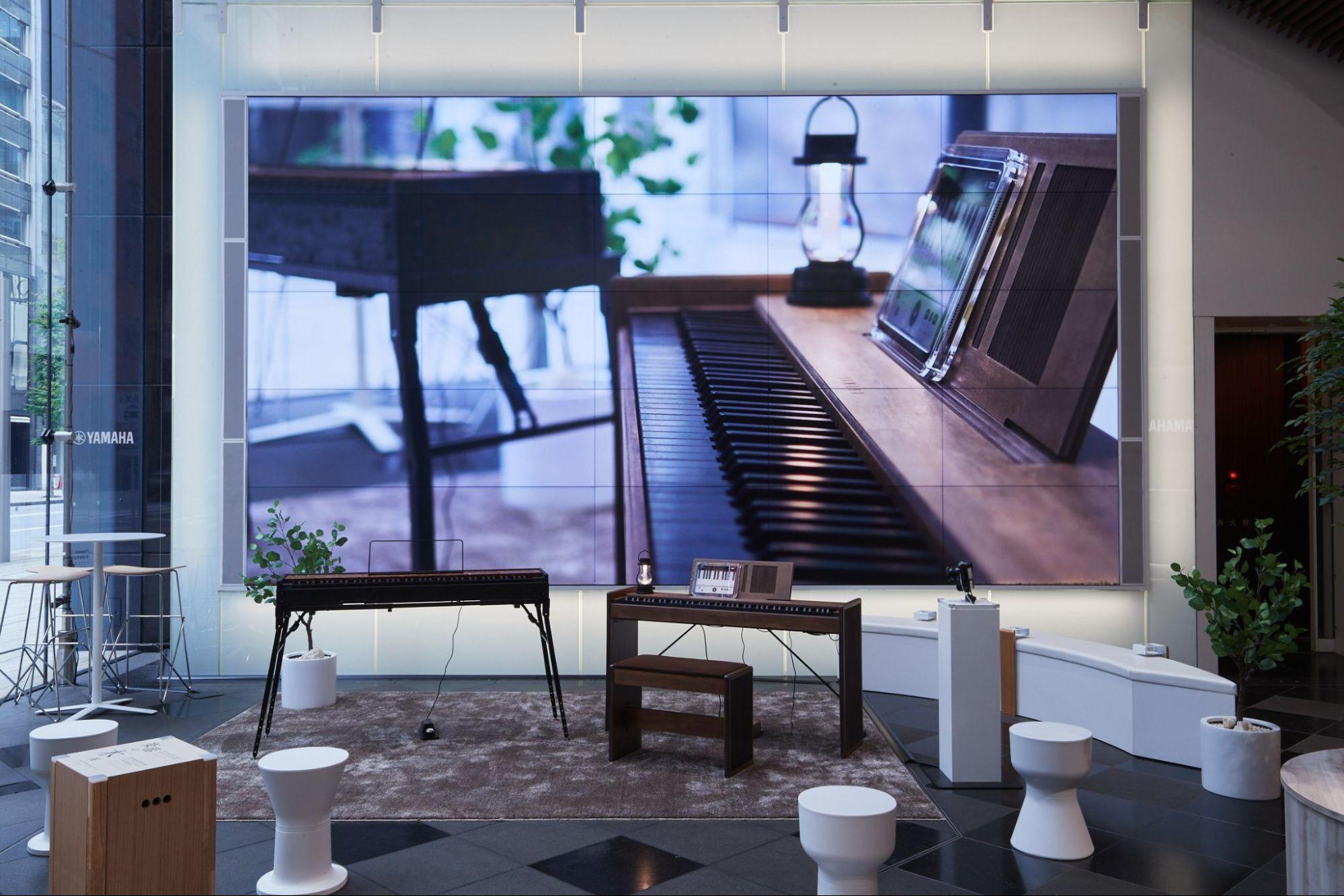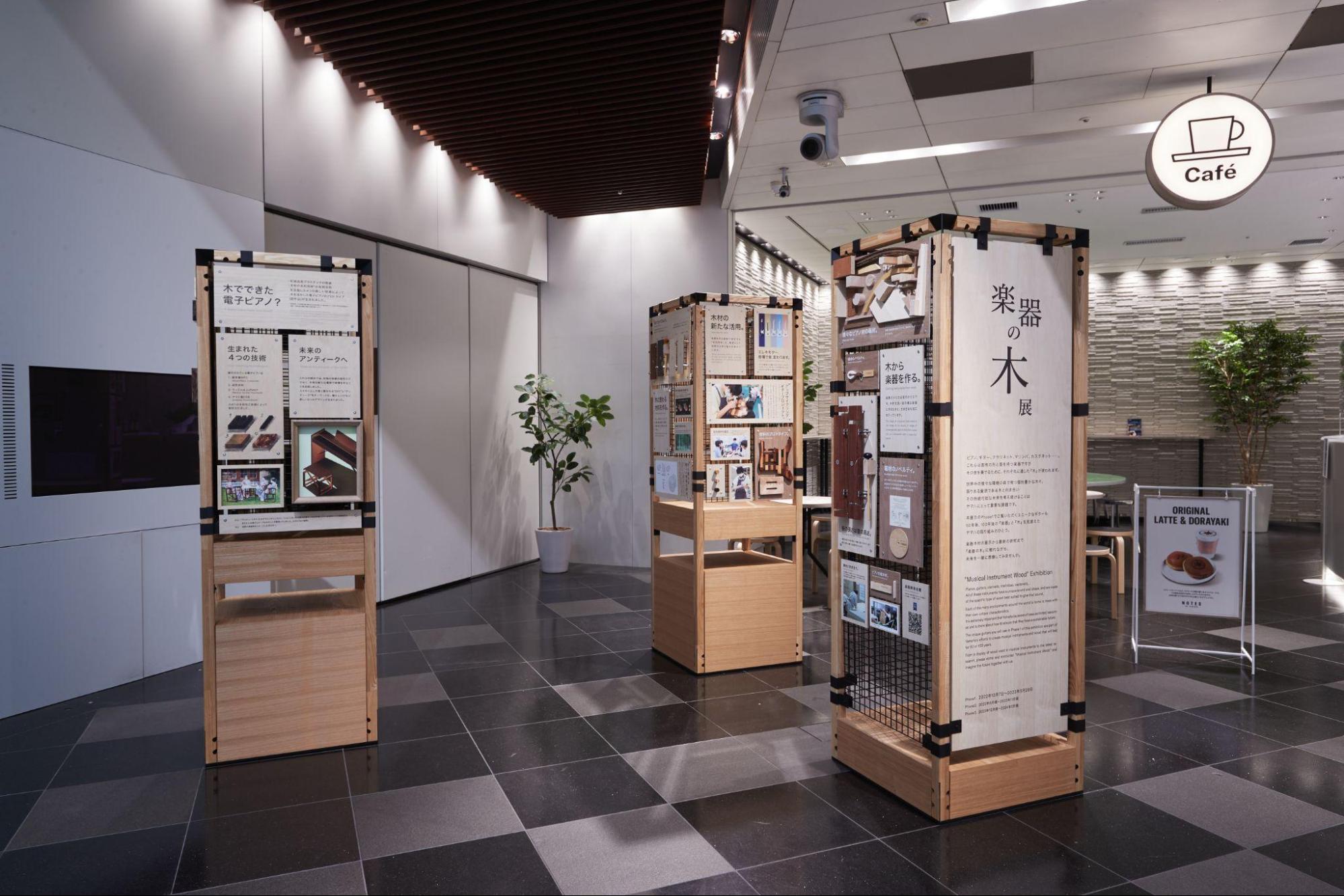Across all forms of industry and production, sustainability has become an important consideration for environmentally conscious brands. One such brand is Yamaha, a company whose ties to sustainability and re-use date all the way back to 1887, when the company’s founder, Torakusu Yamaha, personally repaired an elementary school’s broken reed organ.
Since then, Yamaha has become the manufacturer of high quality musical instruments used the world over. That same mindset possessed by the company’s founder more than a century ago continues to permeate their creations through the incorporation of renewable resources.
Today, this environmentally conscious approach to music can be seen at Yamaha’s flagship store in Ginza. Throughout the “Musical Instrument Tree” exhibition currently on display, visitors can learn about and even get hands-on with the natural materials used in their favorite instruments.

One With Nature
Rather than reminding visitors of the popularity of their products among some of the world’s greatest musicians, the “Musical Instrument Tree” exhibition at the Yamaha Ginza store seeks to educate customers on the value and varieties of wood that comprise their finely tuned instruments through exhibits of sight, sound, and touch.
The exhibition begins by identifying the specific trees traditionally used by Yamaha and where they are sourced from across the globe. This immediately highlights the time, consideration, and effort that goes into making a Yamaha-branded product, as the company continues to use and perfect woodworking techniques developed over decades. Samples of this wood are available for visitors to touch and handle to not only visualize the difference between the various raw materials but to feel it as well.
Further reflecting the decades of research and understanding that Yamaha applies to their craft, interactive exhibits allow visitors to understand the difference in sound created by wood not only of a particular shape and size but also from the specific parts of a single tree. Using the supplied percussion mallets, guests can tap these pieces of timber to understand their individual sounds and how that then translates into part of a larger instrument.

Finally, an electric guitar and keyboards comprised of scrap wood and leftover material show not only the importance of being environmentally conscious but also the possibility and unique beauty that can come of it.
The keyboards — one made in a charming yet robust DIY style and the other, a more antique design compiled using scrap grenadilla, a wood used to make clarinets — both appear as elegant as their contemporary counterparts. While the guitar exhibited on the B1 floor, which has been upcycled with materials rarely or never used to make musical instruments, grabs visitors’ attention from across the room with a patchwork design that perfectly reflects the concept of creating new values when making guitars from conventionally unusual materials.
As part of the “Musical Instrument Tree” exhibition, visitors to the Yamaha Ginza store can also touch and play these one-of-a-kind instruments, giving the secondhand material a chance to continue its life in the world of music.
A World of Music
As Yamaha’s flagship location, Yamaha Ginza is the brand’s largest store in Japan. Spanning 14 stunning floors of musical instruments and literature, including a music hall and café, there is plenty for visitors to experience after getting to know Yamaha more intimately through the “Musical Instrument Tree” exhibition.
Currently in its second phase, the “Musical Instrument Tree” exhibits can be found on both the first floor and the first basement floor of the Yamaha Ginza store and will run until the beginning of December, at which time the to-be-announced phase three will begin.
Located at 7-9-14 Ginza, Chuo-ku, the Yamaha Ginza store is approximately a 5-minute walk from exit A3 of the Tokyo Metro Ginza Station.
For more information on the Yamaha Ginza store and the “Musical Instrument Tree” exhibition, you can visit the official website.









